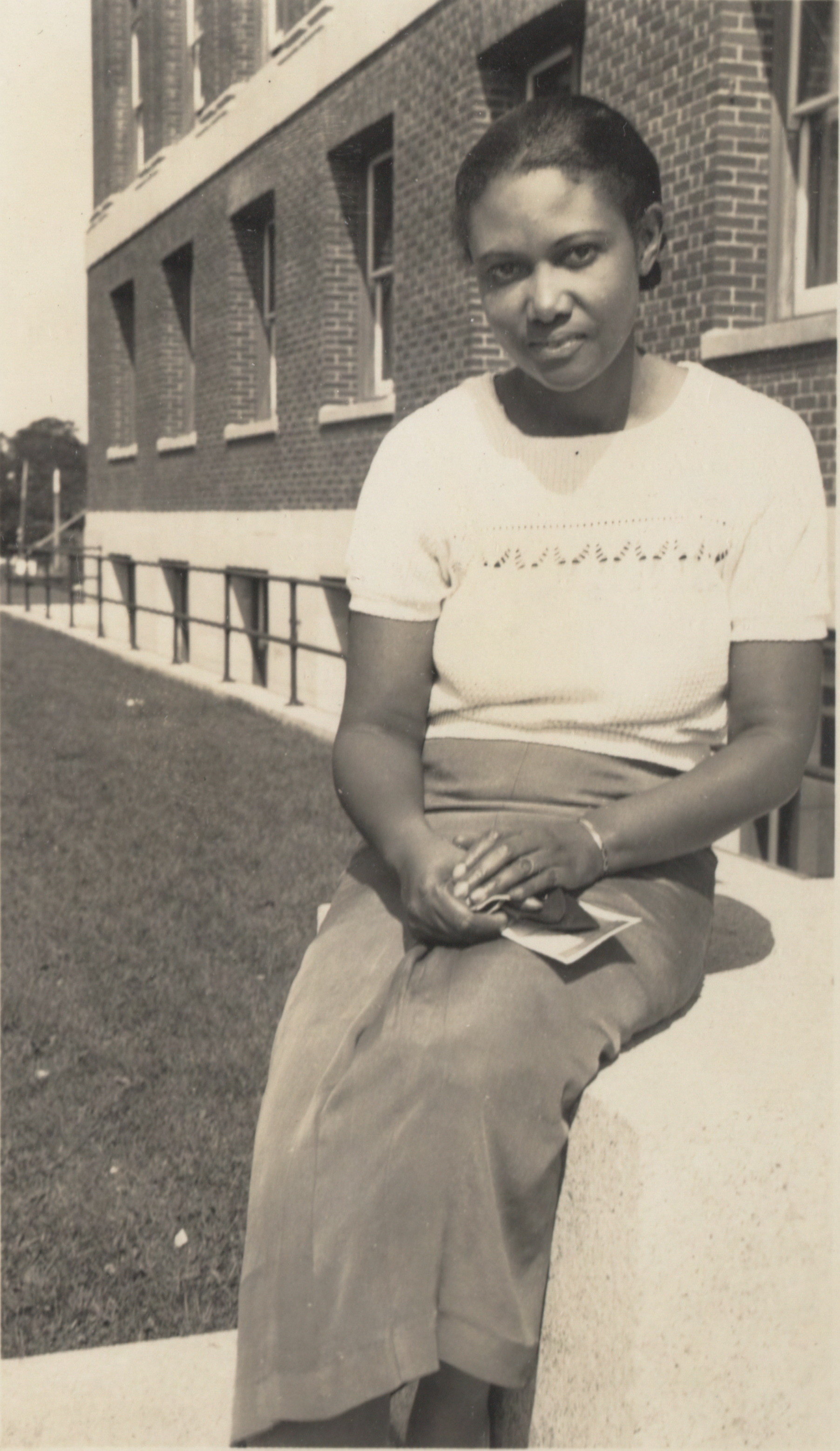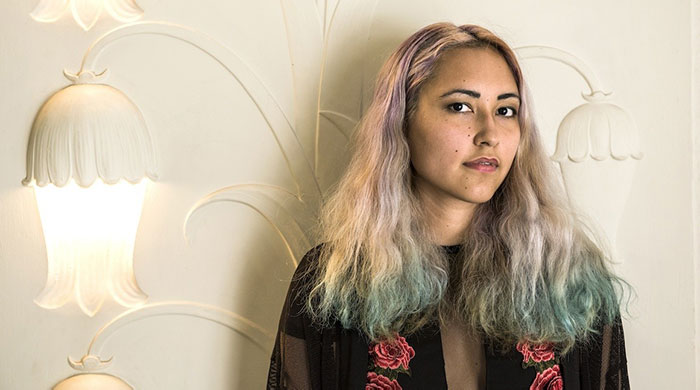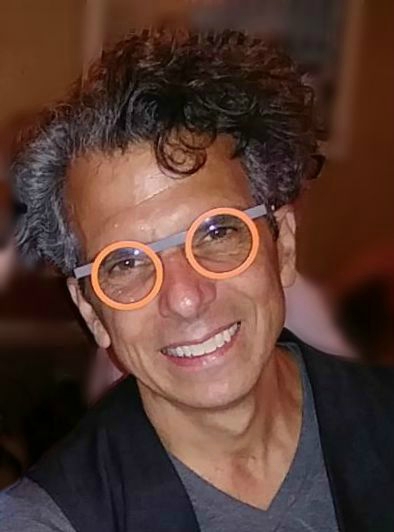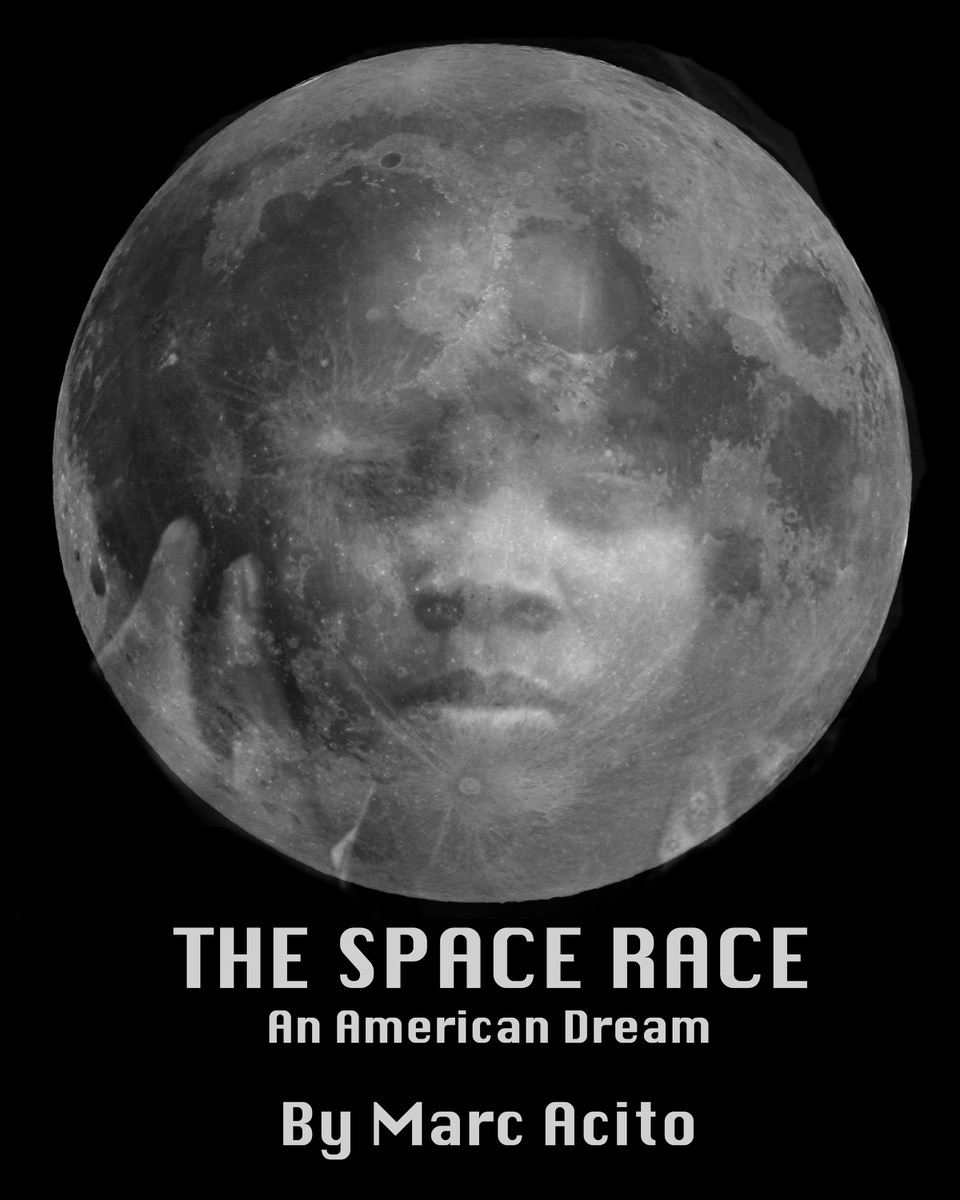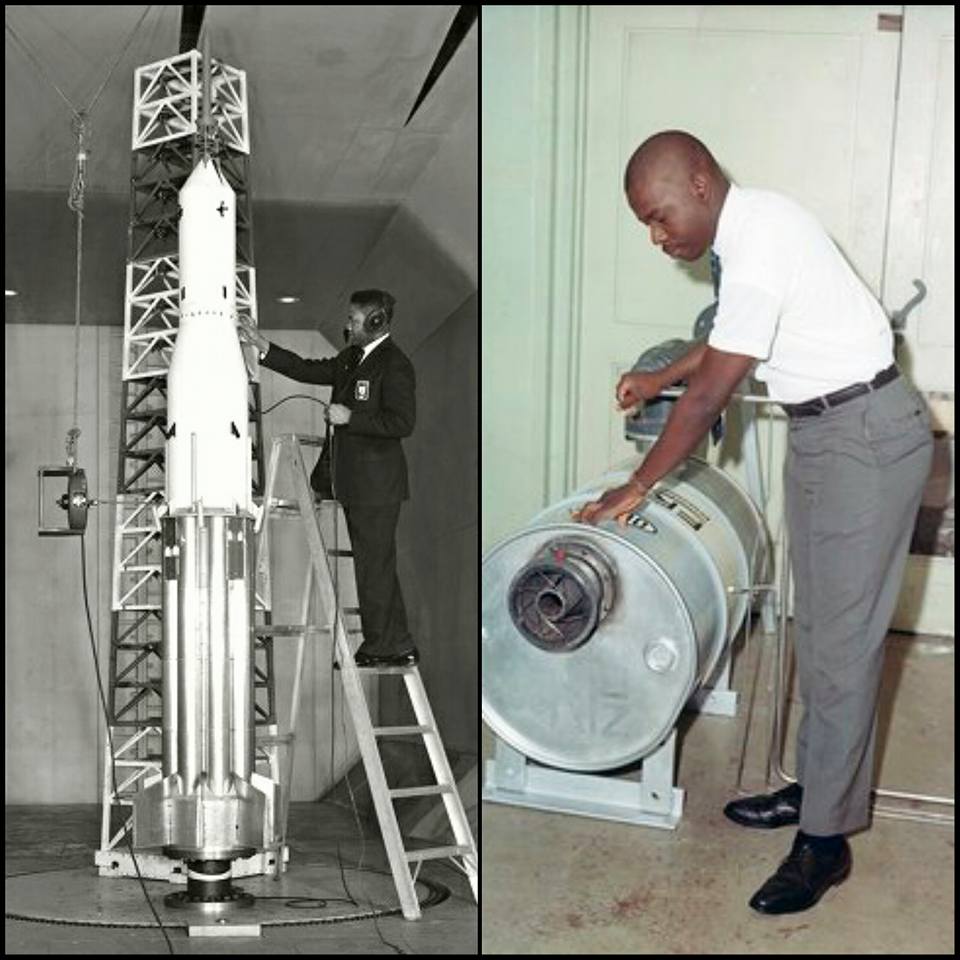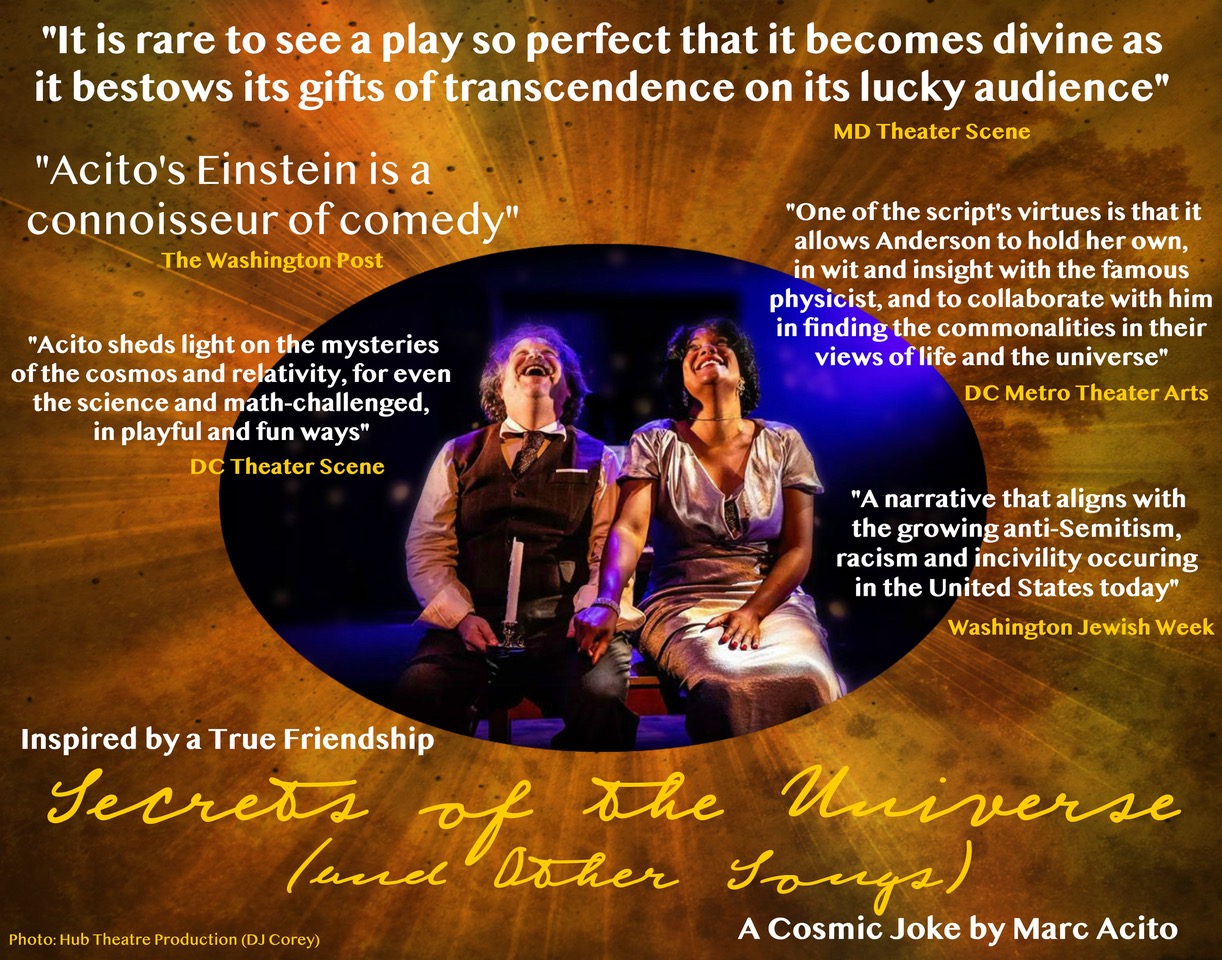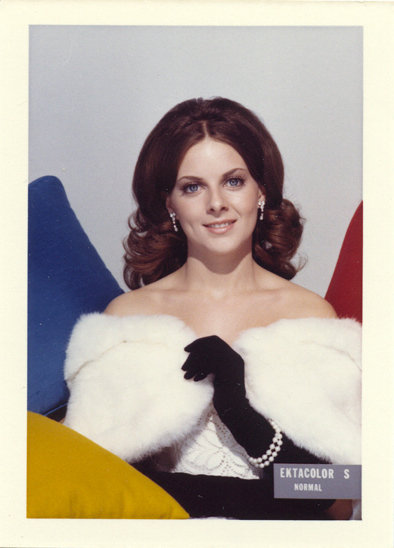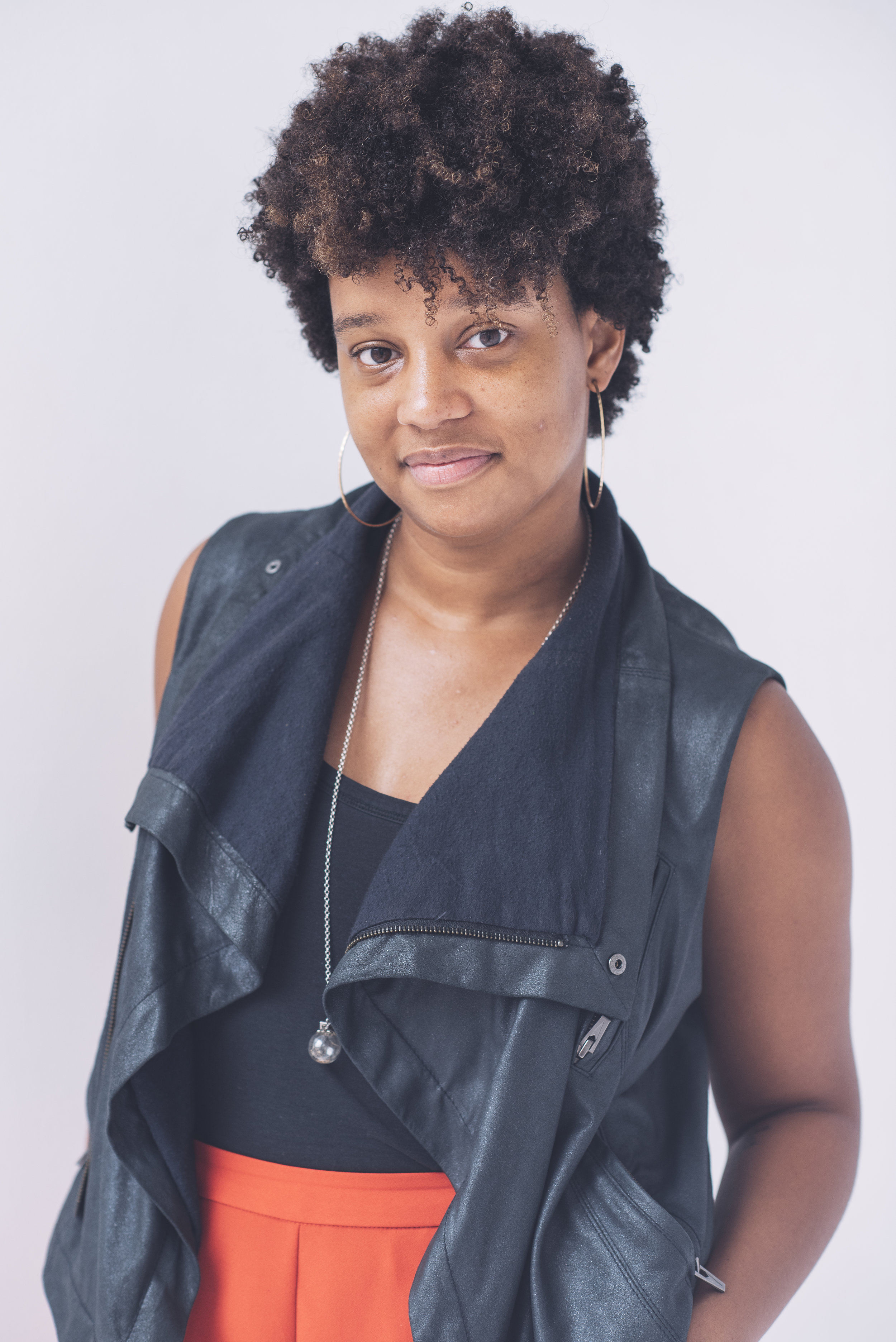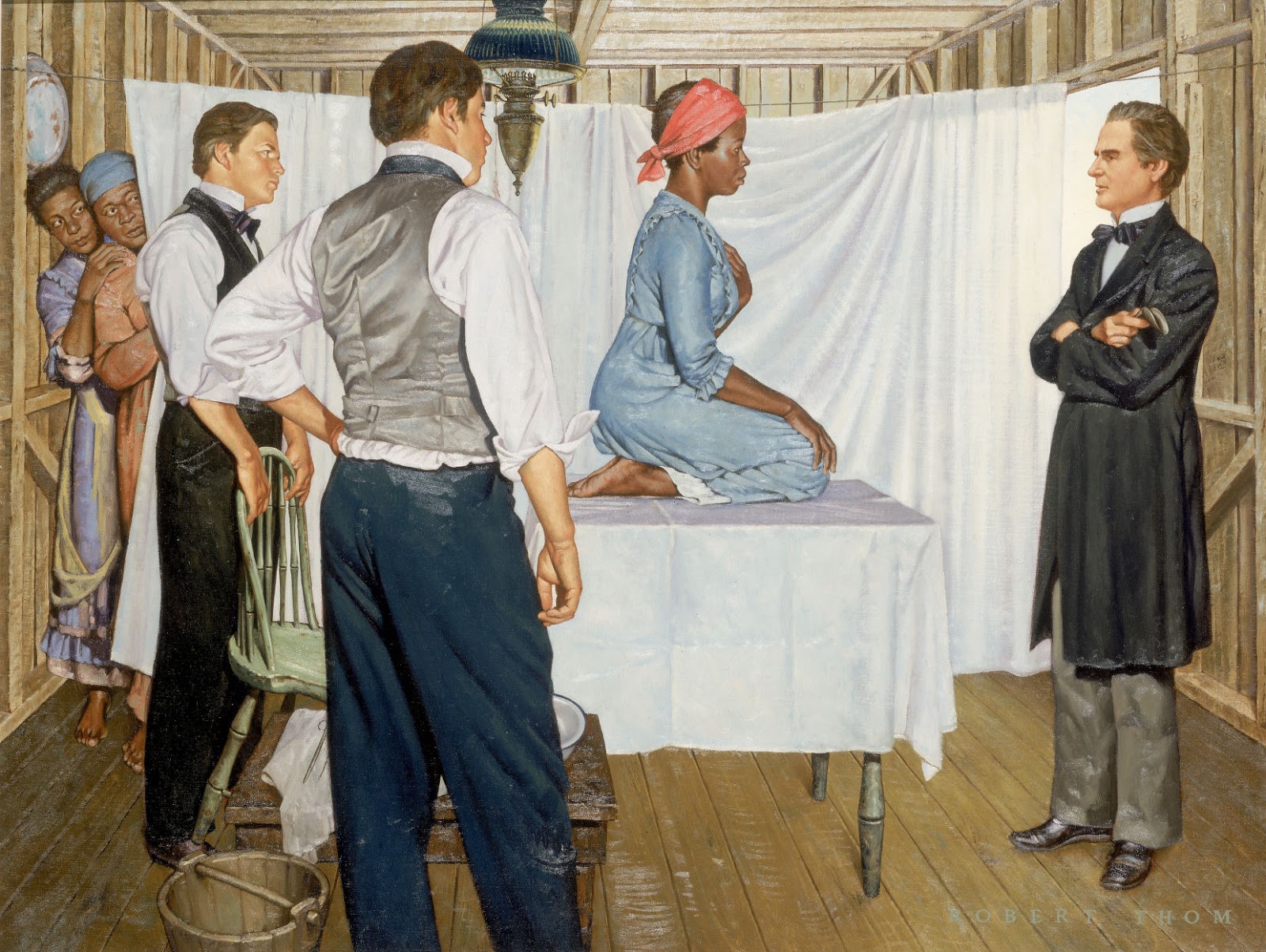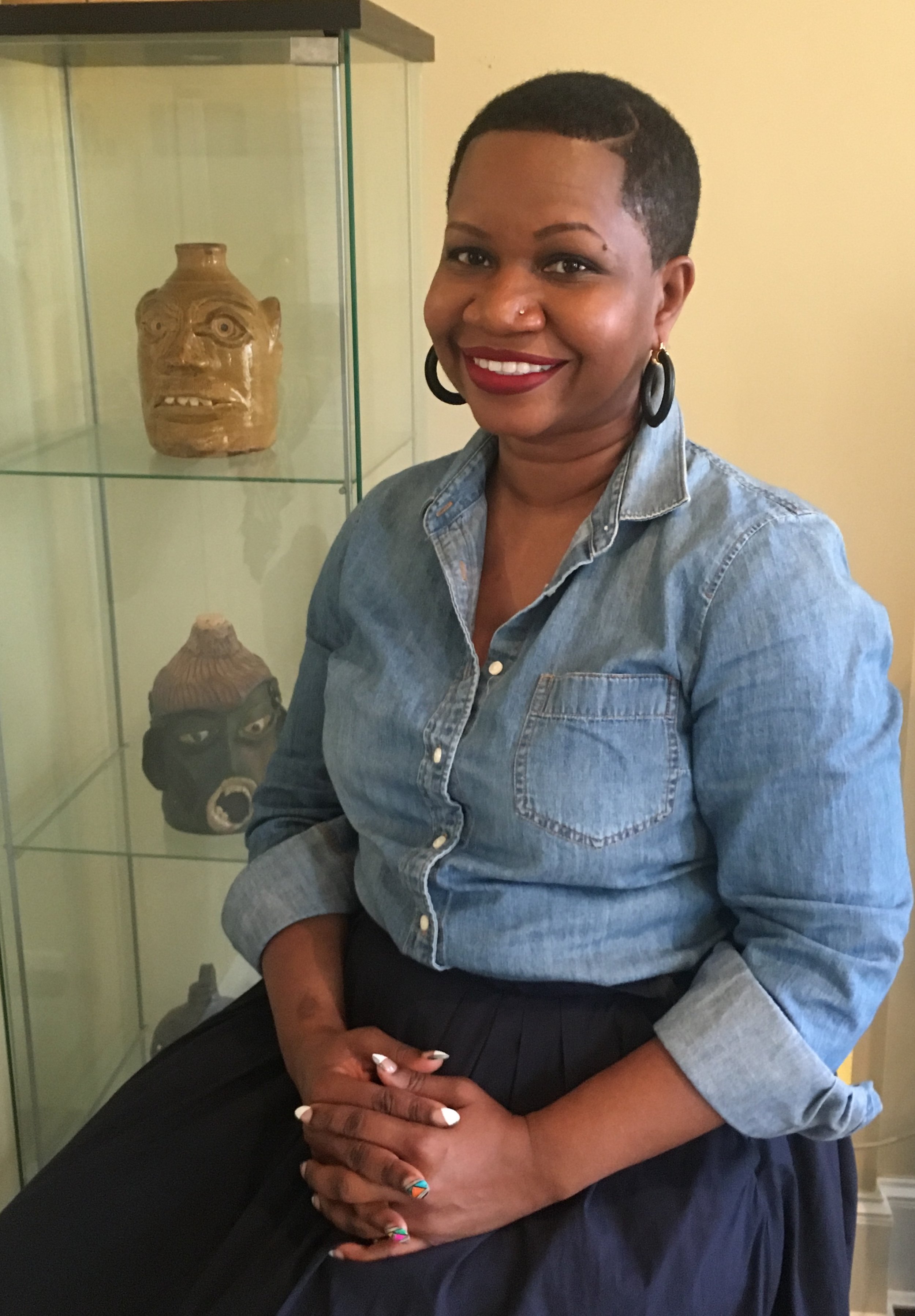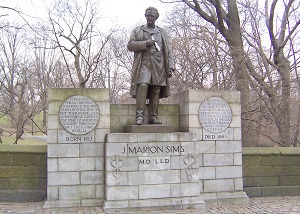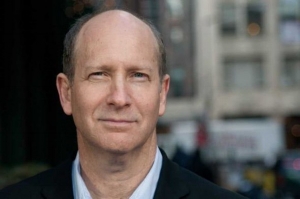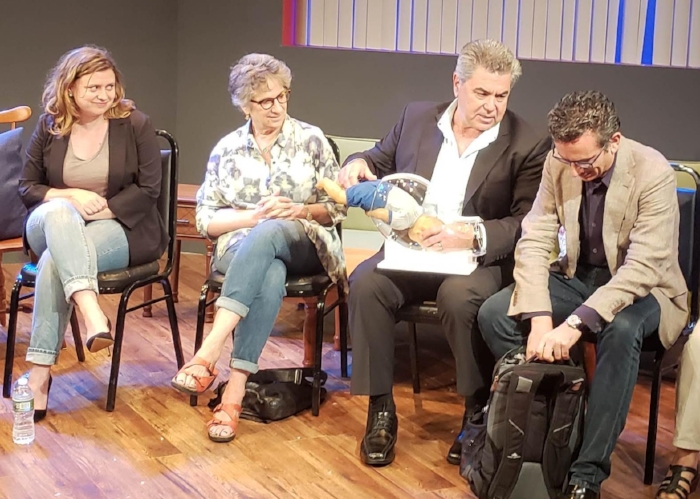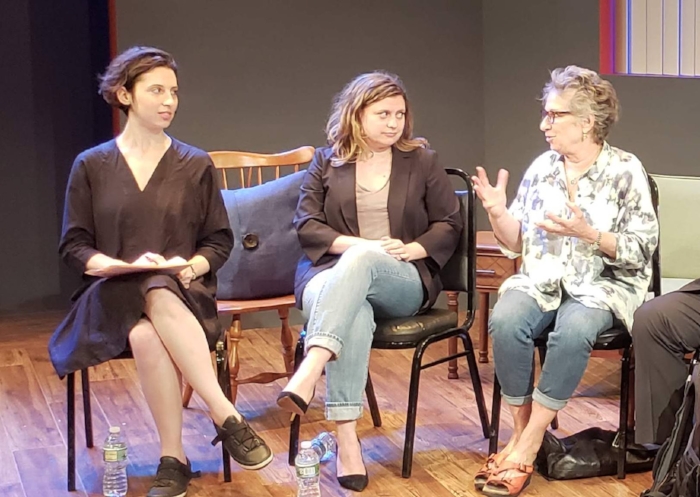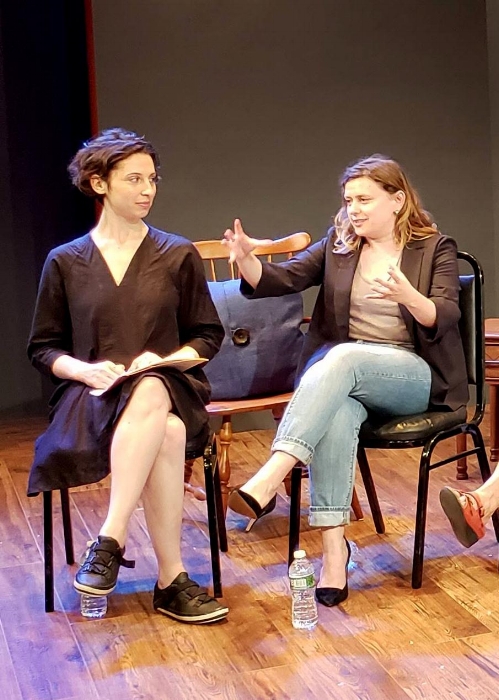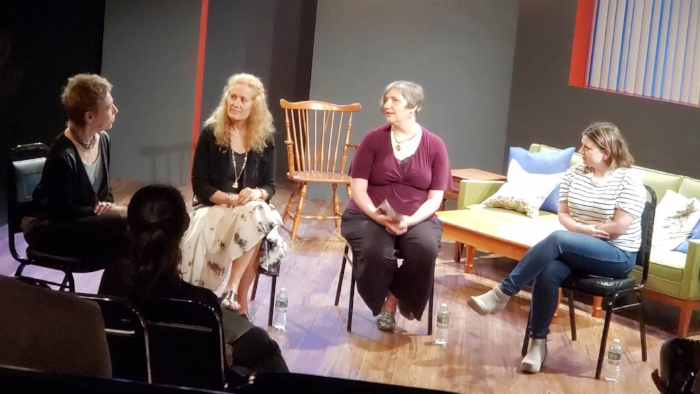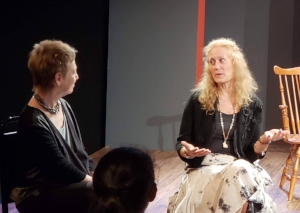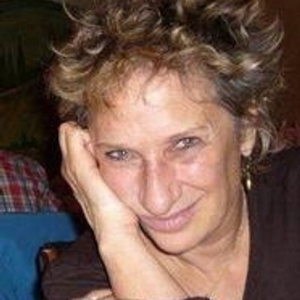WHAT MAKES A GREAT PLAY ABOUT SCIENCE?
“To stimulate artists to create credible and compelling work exploring the worlds of science and technology and to challenge the existing stereotypes of scientists and engineers in the popular imagination.”—this has been the mission of The Ensemble Studio Theatre/Alfred P. Sloan Foundation Science & Technology Project (EST/Sloan Project, for short) for the past 21 years. Over that time the EST/Sloan Project has awarded more than $3 million in grants to some 300 playwrights and theatre companies. More than 150 productions of EST/Sloan-developed plays have been mounted nationwide. (You can view previous commission recipients on the EST/Sloan webpage and submission guidelines here).
Every year the highlight of the EST/Sloan Project submission season is the Fall Artist Cultivation Event. At this eagerly anticipated event, a panel of scientists, science writers and playwrights engages in a far-ranging and free-wheeling discussion with an audience of prospective playwrights about “What Makes a Great Play about Science?” The 2019 Fall Artist Cultivation Event will take place at EST on Thursday, December 12 at 8 PM. The event is free and any playwright interested in developing a play about science or technology is welcome to attend.
Two related events culminate each EST/Sloan season: 1) The First Light Festival is a month-long series of readings and workshops that showcase plays in development, and 2) a full mainstage production of at least one work. Recent mainstage productions have included Behind the Sheet (2019) by Charly Evon Simpson on the enslaved women who as experimental victims launched the science of gynecology (a NY Times Critic’s Pick), BUMP by Chiara Atik (2018) on pregnancy and childbirth, SPILL (2017) by Leigh Fondakowski on the Deepwater Horizon disaster, Boy (2016) by Anna Ziegler on sexual identity, Please Continue (2016) by Frank Basloe on Stanley Milgram’s obedience experiments, Informed Consent (2015) by Deborah Zoe Laufer on scientific research and Alzheimer’s, Fast Company (2014) by Carla Ching on game theory and confidence games, Isaac’s Eye (2013) by Lucas Hnath on scientific method and rivalry, and Headstrong (2012) by Patrick Link on sports and concussions.
This year's Artist Cultivation Event panelists include:
Dr. Heather Berlin is a cognitive neuroscientist and Professor of Psychiatry at the Icahn School of Medicine at Mount Sinai. She trained in clinical neuropsychology at Weill Cornell Medicine in the Department of Neurological Surgery and is a visiting scholar at the New York Psychoanalytic Society and Institute. She explores the neural basis of impulsive and compulsive psychiatric and neurological disorders with the aim of developing novel treatments. She is also interested in the brain basis of consciousness, dynamic unconscious processes, and creativity. Passionate about science communication and promoting women in STEM, Dr. Berlin is a committee member of the National Academy of Sciences’ Science and Entertainment Exchange, the American Association for the Advancement of Science's Committee on Science and Technology Engagement with the Public, and The New York Times series TimesTalks. She co-hosts Startalk with Neil DeGrasse Tyson, and has hosted series on PBS and Discovery Channel. Dr. Berlin co-wrote and starred in the critically acclaimed off-Broadway show, Off the Top, about the neuroscience of improvisation, and the Edinburgh Fringe Festival show, Impulse Control. She has made numerous media appearances including on the BBC, History Channel, Netflix, National Geographic, Big Think, and TEDx, and was featured in the documentary film Bill Nye: Science Guy.
Dr. Mandë Holford is an Associate Professor in Chemistry at Hunter College and CUNY-Graduate Center, with scientific appointments at The American Museum of Natural History and Weill Cornell Medicine. Her joint appointments reflect her interdisciplinary research, which goes from mollusks to medicine, combining chemistry and biology to discover, characterize, and deliver novel peptides from venomous marine snails for manipulating cellular physiology. Her laboratory investigates the power of venom to transform organisms and to transform lives when it is adapted to create novel therapeutics for treating human diseases and disorders. Dr. Holford has conducted several global fieldwork expeditions to collect venomous snails and to present her research findings. She is actively involved in science education, advancing the public understanding of science, and science diplomacy. To provide tools for the classroom, Dr. Holford co-founded Killer Snails, an award-winning EdTech XR learning games company. The mission of Killer Snails is to rethink education by creating science games and immersive experiences tailored to local environments and cultures to advance STEM learning and teaching worldwide. She is a life member of the Council of Foreign Relations and a Board member of the U.S. National Academy of Sciences Engineering and Medicine (NASEM) Global Science Diplomacy Roundtable and Planning Committee. Dr. Holford is also an American Association for the Advancement of Science (AAAS) Science & Technology Policy Fellow. She has received several awards including being named a New Champion Young Scientist by the World Economic Forum, the prestigious Camille Dreyfus Teacher-Scholar Award, an NSF CAREER Award, named a Breakthrough Women in Science by the Howard Hughes Medical Institute (HHMI) and NPR’s Science Friday, and was recently named a Wings WorldQuest Women of Discovery Fellow. Dr. Holford received her Ph.D. in Synthetic Protein Chemistry from The Rockefeller University.
Dr. Christopher Mason is an Associate Professor of Genomics at Weill Cornell Medicine, as well as the Director of the WorldQuant Initiative for Quantitative Prediction, with appointments at Memorial Sloan Kettering Cancer Center (MSKCC) and Rockefeller University. The Mason laboratory develops and deploys new biochemical and computational methods in functional genomics to elucidate the genetic basis of human disease and human physiology. Dr. Mason has won the NIH’s Transformative R01 Award, the NASA Group Achievement Award, the Pershing Square Sohn Cancer Research Alliance Young Investigator award, the Hirschl-Weill-Caulier Career Scientist Award, the Vallee Scholar Award, the CDC Honor Award for Standardization of Clinical Testing, and the WorldQuant Foundation Scholar Award. He was named as one of the “Brilliant Ten” Scientists by Popular Science, featured as a TEDMED speaker, and called “The Genius of Genetics” by 92Y. He has authored of co-authored more than 175 peer-reviewed papers that have been featured on the covers of Nature, Science, Cell, Nature Biotechnology, Nature Microbiology, and Neuron, as well as cited by the U.S. District Court and U.S. Supreme Court. Coverage of his work has also appeared on the covers of the Wall Street Journal, New York Times, TIME, The LA Times, and across many media (ABC, NBC, CBC, CBS, Fox, CNN, PBS, NASA, NatGeo). He has co-founded five biotechnology start-up companies (Genome Liberty, Biotia, Onegevity Health, P-Omics, and Shanghai GeneTech) and serves as an advisor to 15 others. He lives with his daughter and wife in Brooklyn, NY.
Playwright Sam Chanse is the author of Trigger, Monument, or Four Sisters (A Sloth Play), The Opportunities of Extinction, Fruiting Bodies, The Other Instinct, What You Are Now, Lydia’s Funeral Video, about that whole dying thing, and Asian American Jesus. Her play What You Are Now about memory and trauma was featured in the EST/Sloan 2017 First Light Festival and received a 2019/2020 grant from EST/Sloan for a developmental production with The Civilians in 2020. Her work has been developed and/or produced with the Lark, Ma-Yi Theater, Cherry Lane, Leviathan Lab, Ars Nova, Broken Nose, Ensemble Studio Theater/Sloan Project, and the Ojai Playwrights’ Conference, and is published by Kaya Press (Lydia’s Funeral Video) and TCG (The Kilroys List). She is a Lark Venturous Fellow, a resident playwright of New Dramatists, a member of the Ma-Yi Writers Lab, and a Rita Goldberg Playwrights' Fellow at the Lark. A former fellow at MacDowell, Cherry Lane Mentor Project, Sundance/Ucross Theatre Program, and the Playwrights Realm, she has also received residencies from Djerassi, Tofte Lake Center, Merrimack Repertory Theatre, and SPACE at Ryder Farm. Commissions include Ensemble Studio Theatre/Sloan, Ma-Yi/the Flea, Second Generation, Leviathan, and the San Francisco Arts Commission. She is an alumna of Ars Nova’s Play Group, the Civilians R&D Group, and the Lark’s New York Stage & Film Vassar Retreat.
Playwright Patrick Link is the author of Headstrong, a gripping family drama about concussions and sports that was the EST/Sloan Mainstage Production in 2012, directed by William Carden, and later recorded by LA Theatre Works. His other works include The Majestic Players Storm Kansas City, Sweet Forgotten Flavor, and his Galileo Prize-winning Kinemacolor (EST/Sloan). He has also written the book for several musicals with Eric March that include Christmas in Queens, Red Hook Hotel, The Bone Wars (commissioned by EST/Sloan), and The Triple Threat. He is an alum of Youngblood and a member of Ensemble Studio Theatre.
The moderator
Steve Mirsky is a senior editor at Scientific American. He has written the “Anti Gravity” column since 1995. Mirsky launched Scientific American’s long-form Science Talk podcast in 2006 and has been hosting it ever since. He also created the daily 60-Second Science podcast later that year and its 3000th episode will run in early 2020. He has contributed to numerous publications and broadcast outlets, including Audubon; Wildlife Conservation; National Wildlife; Earth; Longevity; The Humanist; Men’s Fitness; American Health; Technology Review; the Howard Hughes Medical Institute Bulletin; Astronomy; New York Newsday; Sea Frontiers; the children’s magazines Current Science, Science World and Muse; National Public Radio; and the Medical News Network. Mirsky is also a 1978 graduate of the American Academy of Dramatic Arts.











































